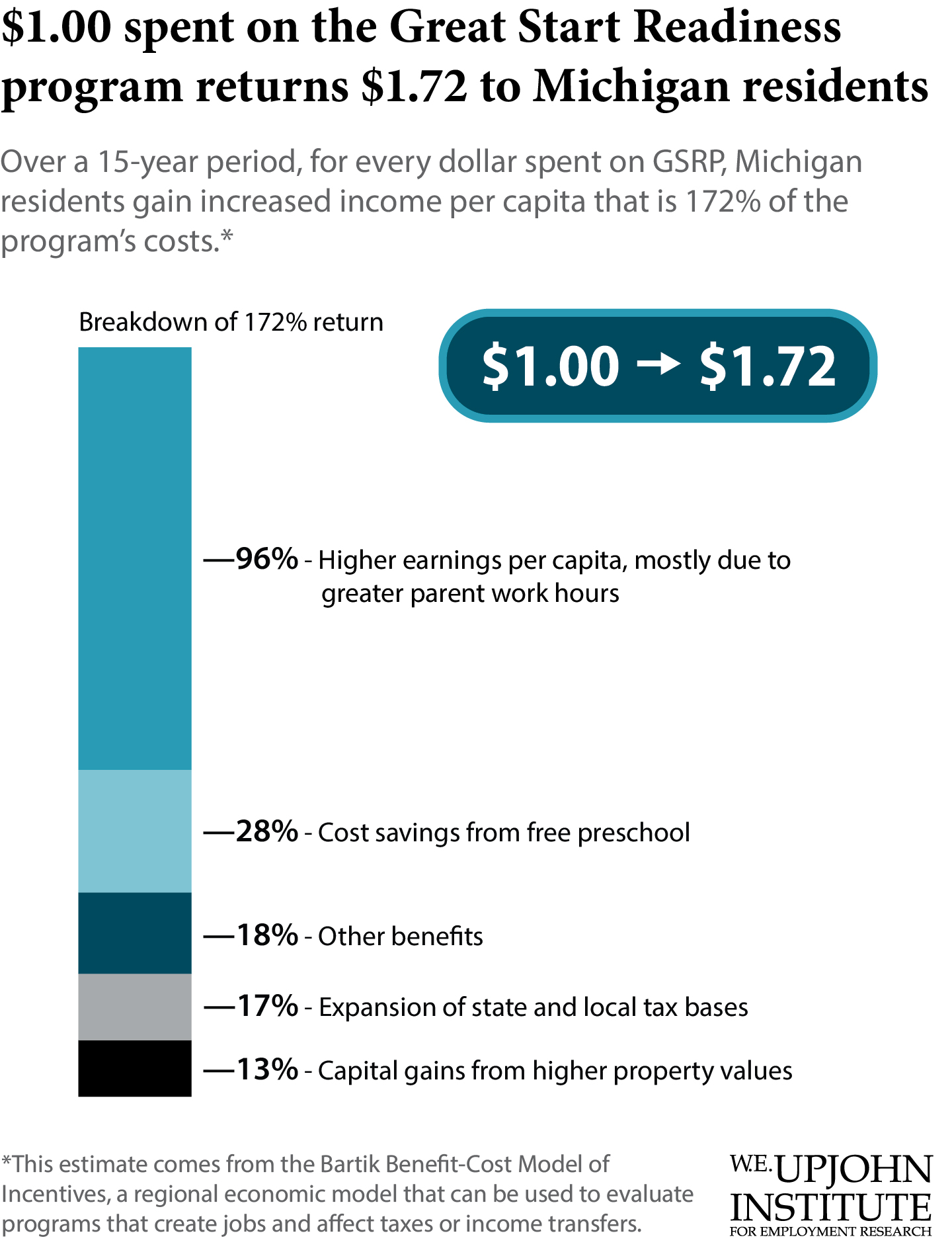
Michigan’s free-preschool program passes a benefit-cost test, a new analysis by Upjohn Institute Senior Economist Tim Bartik finds, mainly by increasing parents’ earnings. Bartik’s analysis looks at the fiscal effects of the state-funded Great Start Readiness Program, which enrolls more than one-third of Michigan’s 4-year-olds.
Funding for the program has more than doubled in the last four years and Gov. Gretchen Whitmer has proposed expanding the program so that all Michigan 4-year-olds could be enrolled..
Over a 15-year horizon, Bartik finds the greatest economic effects of the program come from providing free child care, which helps parents save money and frees them to work more hours. With increased savings and earnings, parents spend more money on goods and services, stimulating the Michigan economy.
All told, Bartik’s model finds that $1 spent on the program creates $1.72 in total economic benefits.
Those benefits don’t mean the program pays for itself, in the sense that the state government collects sufficient revenue to pay for all program costs. However, there is some significant government payback: tax receipts from the economic stimulus allow state and local governments to recoup 17 cents of each dollar spent on the program, lowering the program’s net costs by over one-sixth. The remaining benefits accrue to parents of young children and other residents.
Importantly, Bartik’s analysis looks only at economic effects over only 15 years, so it doesn’t place a value on other Great Start Readiness Program goals, such as how well students later perform in school or what social skills they learn. It also doesn’t include any economic effects from the children themselves as they finish school and enter the workforce, as these effects happen mainly after the 15-year window used in the analysis.
Even within the narrow scope, the program is worth its budget cost, Bartik writes. Including those effects would further increase the program’s benefit-cost ratio.
Policy Recommendations
Given GSRP’s role in supporting parental employment, Bartik suggests policymakers consider two strategies:
- Increase funding for the Extended Program. This program offers 50% more preschool days than the minimum program but currently receives only 20% more funding per child, despite its higher costs. Raising this funding to at least 40% more per child could encourage more providers to offer it.
- Support job training for GSRP parents. Funding local job training agencies to provide job training, placement, or retention services for GSRP parents could have significant short- and long-term benefits for both families and Michigan’s economy, despite the costs.

